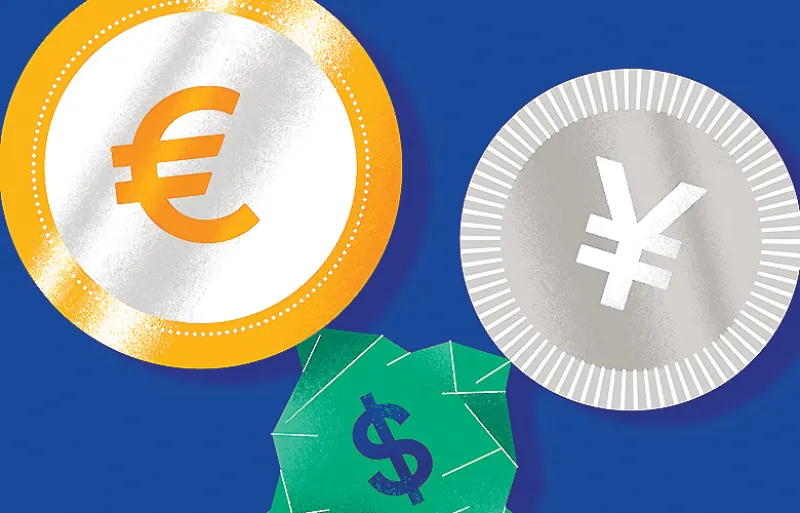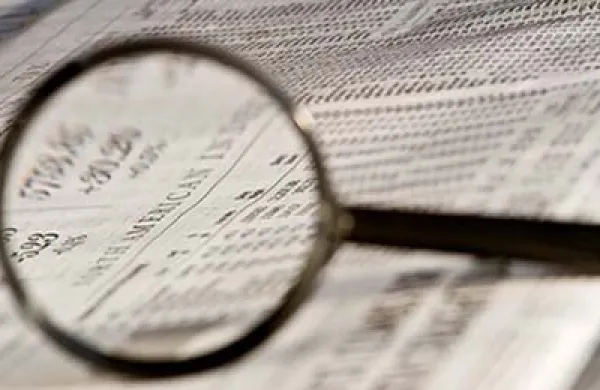For more than 50 years, the dollar has served as the world’s primary safe-haven currency, drawing buyers in times of political, economic, and financial turmoil. But that may be changing.
Lately, the yen and euro have been boosting their safe-haven status at the dollar’s expense. “Maybe we can say the dollar is no longer the go-to safe-haven currency,” says David Gilmore, partner at Foreign Exchange Analytics, a currency research firm in Essex, Connecticut.
On many days this year, when markets got spooked on news reports and participants wanted to reduce their risk, traders and investors have bought yen and euros against the dollar. Through September 27, the dollar had fallen 3.5 percent against the yen for the year, to 112.84, and the euro had risen 12 percent against the greenback, to 1.1745.
Experts offer a slew of explanations for the shift away from the dollar as a safe-haven currency.
First, there are the persistent current-account surpluses in Japan and the euro zone, in contrast to the persistent current-account deficits in the U.S. The current-account surpluses of Japan and the euro zone mean investors from those nations have large stocks of assets abroad, which they sell during so-called risk-off periods, repatriating the proceeds into their home currencies, notes Athanasios Vamvakidis, head of G-10 currency strategy at Bank of America Merrill Lynch.
Japan had a current-account surplus of ¥20.6 trillion ($182.77 billion) last year, and the euro zone’s 12-month cumulative current account through January was a surplus of €357.9 billion (then $375 billion). Meanwhile, the U.S. ran a deficit of $481.2 billion in 2016, according to the latest data from the World Bank.
Second, the economies of Europe and Japan are showing signs of life, while investors remain disappointed with sluggish growth in the U.S. amid the government’s dysfunction over economic policy. The International Monetary Fund forecasts an expansion of 1.3 percent for Japan this year, compared with 1 percent in 2016. And it sees GDP growth of 1.9 percent in the euro zone this year, compared with 1.8 percent last year. Stronger economies generally translate into stronger currencies.
In the U.S., the failure of the Trump administration to implement tax cuts and infrastructure spending and a general paralysis on fiscal policy in Washington have weighed on investor sentiment. “Now that there are doubts about Trump and U.S. policy, people are looking for an alternative to the dollar,” says Marc Chandler, global head of currency strategy at Brown Brothers Harriman.
Third, the supply of dollars has soared since the Federal Reserve began its massive easing program more than nine years ago, leaving many market players saturated with the currency already.
“The world is awash with dollars,” Gilmore says. Since 2007 the Federal Reserve has increased its balance sheet by more than four times, to $4.5 trillion. “Those dollars are in the financial system,” he points out. “Everyone already owns a lot of dollars.” So if you’re worried about the latest spat between Kim Jong Un and Donald Trump, “you’re not really diversifying if you buy more dollars,” Gilmore says.
In addition, traders and investors have been using low-interest-rate currencies like the yen to fund purchases of risk assets such as U.S. and emerging-markets stocks, Chandler says. “When tensions rise, people sell risk assets and then buy back the funding currencies,” he says.
Chandler calls the euro the “undollar,” just as 7Up called itself the “uncola” in comparison to much more dominant brands like Coke and Pepsi in the 1970s. “The euro zone has the biggest and deepest market after the dollar,” he says. “If people leave the dollar, the euro is the first alternative. It’s attractive as the undollar.”
Not everyone views the dollar’s decline this year as evidence that its role as a safe-haven currency is being diminished, however. “There is no evidence of that,” says Jeffrey Frankel, professor of capital formation and growth at Harvard University’s Kennedy School. “Being a safe haven doesn’t mean the dollar has to go up all the time.”
Frankel points out that one indicator of risk, the CBOE Volatility Index (known as the VIX), declined 29.7 percent this year through September 27, at the same time that the dollar slid. Another important risk indicator, the yield premium of high-yield U.S. corporate bonds over Treasuries, also slid during that period.
Frankel and others acknowledge that rising economic growth overseas and the Trump administration’s failure on fiscal policy have pushed the dollar down against the euro and yen, but that doesn’t mean they have pushed the dollar out as the primary safe-haven currency, they say.
For one thing, U.S. government bonds remain a safe-haven investment, notes Peter Hooper, chief economist at Deutsche Bank Securities. “U.S. Treasuries haven’t been displaced to any significant extent as the asset of choice for risk-free holdings globally,” he says. And, of course, it takes dollars to buy them. The ten-year Treasury yield dropped 14 basis points this year through September 27, to 2.31 percent.
Still, the dollar’s safe-haven status is far from assured. President Trump, with his erratic leadership style, is “perfectly capable” of putting an end to the dollar’s preeminence as a safe-haven currency, Frankel says. “But not yet.”







